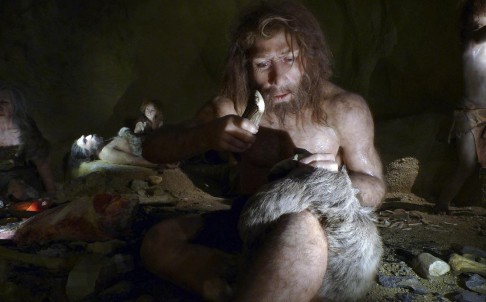Neanderthals were just as smart as modern humans, say researchers
Neanderthals were intelligent hunters who interbred with modern man, say researchers
PUBLISHED : Sunday, 04 May, 2014, 4:22am
UPDATED : Sunday, 04 May, 2014, 4:22am
Reuters

Neanderthals were sophisticated hunters. Photo: Reuters
No offence, but your ancestors probably were no brighter than a Neanderthal.
That's according to a pair of researchers after analysing archaeological evidence detailing the capabilities of Neanderthals, our closest extinct human relative, compared to the early modern humans who first crossed their path about 40,000 years ago.
The researchers said the findings show Neanderthals engaged in complex hunting methods that required a group effort and planning in advance and likely used spoken language and fire.
"We found no data in support of the supposed technological, social and cognitive inferiority of Neanderthals compared to their modern human contemporaries," said Wil Roebroeks, an archaeologist at Leiden University in the Netherlands.
Neanderthals prospered across Europe and Asia from about 350,000 to about 40,000 years ago, but disappeared after early modern humans trekked into Europe from Africa.
Many scientists had postulated that Neanderthals were too stupid, clumsy and incompetent to survive the competition of modern humans.
Paola Villa, a curator at the University of Colorado Museum of Natural History, said the truth is far more complex.
Genetic evidence shows there was interbreeding between Neanderthals and the early modern humans, Villa noted.
Male offspring resulting from interbreeding were likely infertile, which may have contributed to a Neanderthal population decline, Villa said. The remnants of the Neanderthal population eventually may have been assimilated into the larger modern human population, she added. "In a certain sense, they are not completely extinct because some Neanderthal genes are present in our genome," Villa said.
There were some anatomical differences between the two species: the large-browed Homo neanderthalensis and the sleeker Homo sapiens. The bodies of Neanderthals were shorter and stockier than modern humans, and the middle part of the face was bigger, with a larger nose.
Writing in the scientific journal PLOS ONE, Villa and Roebroeks highlighted some of the capabilities of Neanderthals. They pointed to archaeological sites in Europe where Neanderthals probably herded bison to their deaths by leading them into a sinkhole.
